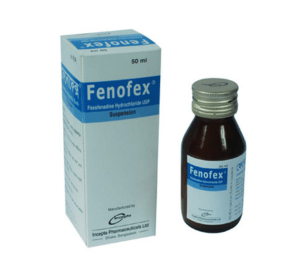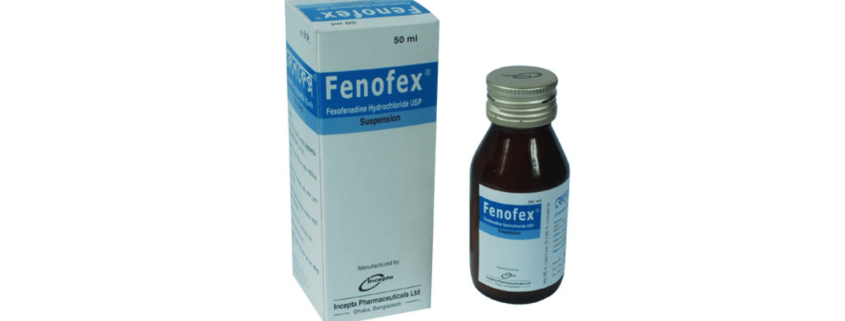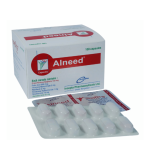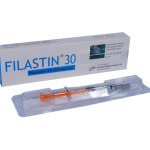Fenofex(Fexofenadin)

Therapeutic Group: Anti Histamine
Presentation
Fenofex 60: Each film-coated tablet contains Fexofenadine Hydrochloride USP 60 mg
Fenofex 120: Each film-coated tablet contains Fexofenadine Hydrochloride USP 120 mg
Fenofex 180: Each film-coated tablet contains Fexofenadine Hydrochloride USP 180 mg
Fenofex suspension: Each 5 ml suspension contains Fexofenadine Hydrochloride USP 30 mg
Description
Fexofenadine is a second-generation, long lasting H1-receptor antagonist which has a selective and peripheral H1-antagonistic action. Fexofenadine blocks the H1-receptor and thus prevents activation of cells by histamine in the GI tract, large blood vessels and bronchial smooth muscle. This leads to relief of the allergic symptoms. Unlike most other antihistamines, Fexofenadine does not enter into the brain from the blood and therefore, does not cause drowsiness. Fexofenadine lacks the cardiotoxic potential, since it does not block the potassium channel involved in repolarization of cardiac cells.
Indications
It is indicated for the relief of symptoms associated with seasonal and perennial allergic rhinitis and chronic idiopathic urticaria.
Dosage & Administration
Adults:
Allergic rhinitis: 120 mg once daily or 60 mg twice daily
Urticaria: 180 mg once daily
Children:
2-11 years: 30 mg (1 spoonful) or 5 ml twice daily
6 months-2 years: 15 mg (1/2 spoonful) or 2.5 ml twice daily
Side Effects
Fexofenadine is generally well tolerated. The most commonly reported adverse events are headache, drowsiness, nausea, and dizziness. The incidence of these events observed with Fexofenadine hydrochloride was similar to that observed with placebo.
Precautions
Studies in the elderly, patients with hepatic impairment and patients with cardiac disease exposed to Fexofenadine showed no statistically significant differences compared to healthy individuals. As with most new drugs there is only limited data in the elderly and renally or hepatically impaired patients. Fexofenadine hydrochloride should be administered with care in these special groups.
Use in Pregnancy & Lactation
In pregnancy
Pregnancy Category B. There are no adequate and well controlled studies in pregnant women. Fexofenadine should be used during pregnancy only if the potential benefit justifies the potential risk to the fetus.
Lactation
It is not known if Fexofenadine is excreted in human milk. Because many drugs are excreted in human milk, caution should be exercised when Fexofenadine is administered to a nursing woman.
Over Dose
In case of an overdose, standard measures to remove any unabsorbed drug should be employed. Symptomatic and supportive treatment is recommended. There has been no reported case of an acute overdose of Fexofenadine hydrochloride.
Storage
Store Fenofex at controlled room temperature 20-25 °C. Keep all medicines away from reach of children.
Commercial Pack
Fenofex 60: Each box contains 3 blister strips of 10 tablets.
Fenofex 120: Each box contains 2 blister strips of 10 tablets.
Fenofex 180: Each box contains 2 blister strips of 10 tablets.
Fenofex suspension: Each bottle contains 50 ml suspension.



